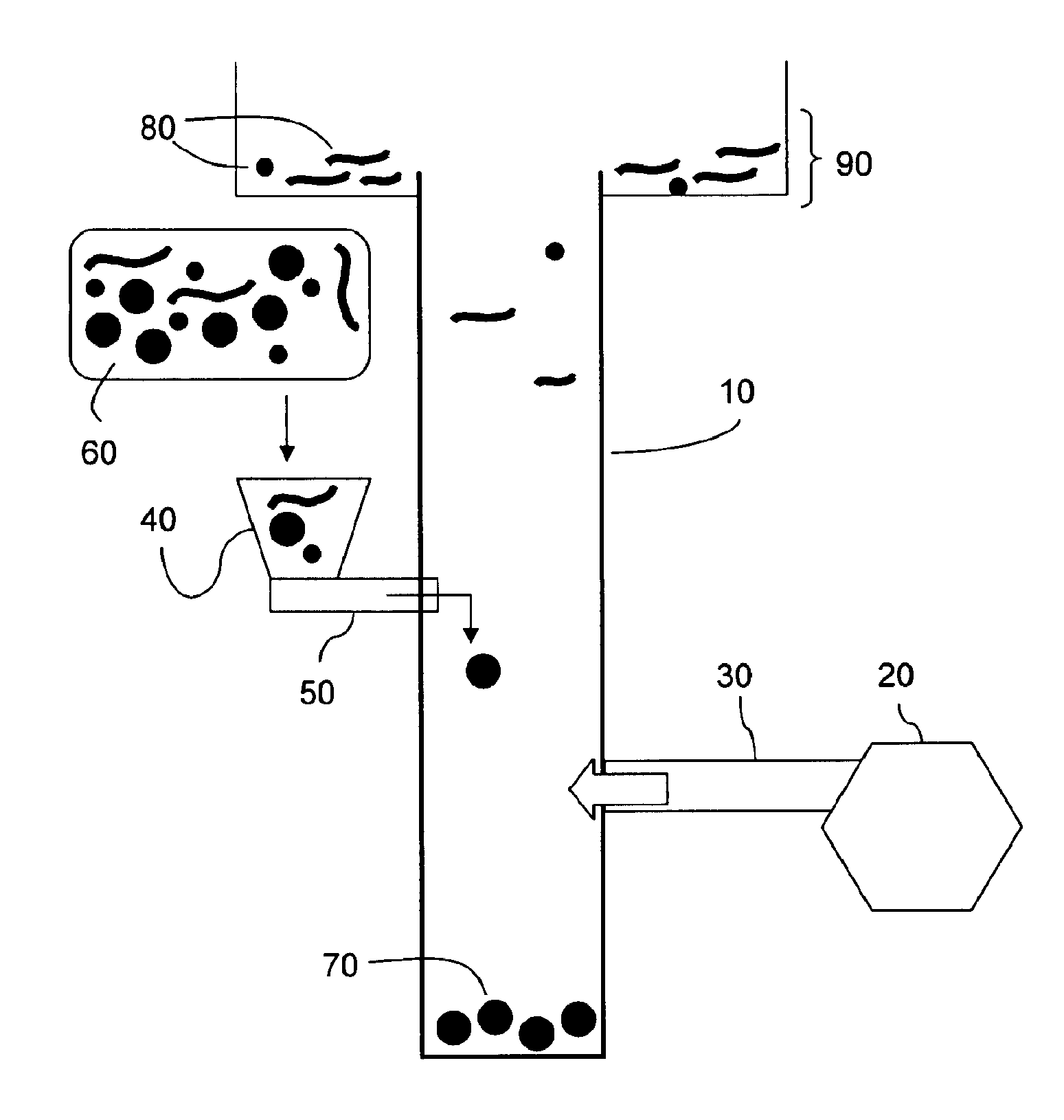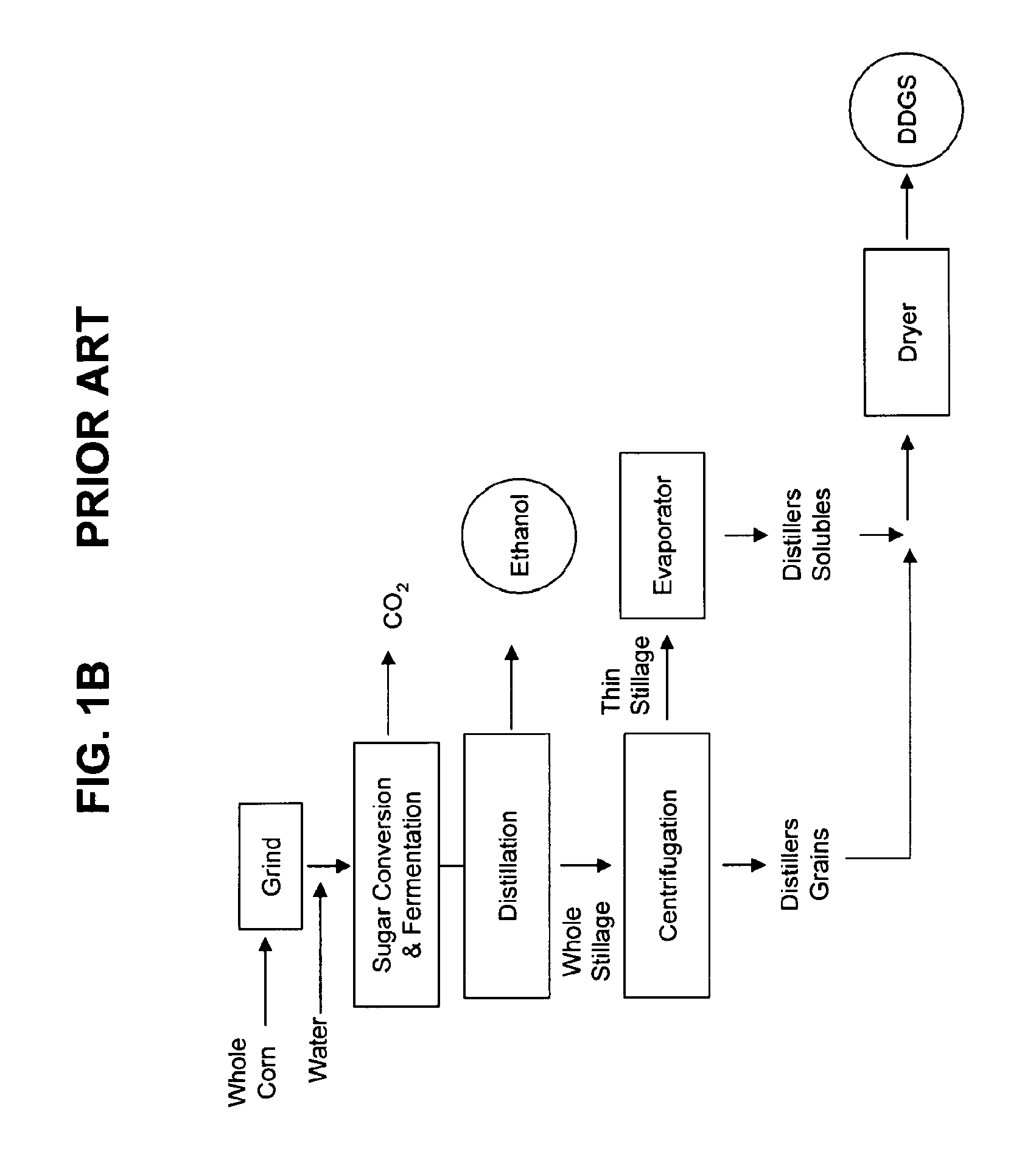Fiber separation from grain using elusieve process
a technology of fiber and elusieve, which is applied in the field of separating fiber from grain products, can solve the problems of restricting its applicability as a feed product, non-ruminant animals, and generally less able to digest high fiber ddgs, and achieves the effect of being adaptabl
- Summary
- Abstract
- Description
- Claims
- Application Information
AI Technical Summary
Benefits of technology
Problems solved by technology
Method used
Image
Examples
example 1
[0089]Method of Removing Fiber from DDGS
[0090]FIG. 4 illustrates a flow chart of a fiber removal process. Input material is first subjected to classification, such as by gravity air elutriation. This separates the input material into heavier and lighter fractions. The lighter fraction is then sieved into a larger subfraction and a smaller subfraction. The initial heavier fraction can be combined with the smaller subfraction from sieving to yield a fiber-reduced output. The larger subfraction from sieving yields a fiber-enriched output.
[0091]In a particular example, the input material is DDGS. DDGS is conventionally produced in an ethanol processing plant using the Dry Grind process. See FIG. 1. In an embodiment of the invention, the fiber content of conventionally produced DDGS is reduced to yield an enhanced DDGS. This enhanced DDGS can be used as feed product for non-ruminant agricultural animals, such as swine and poultry, in addition to still being suitable for ruminants. Additi...
example 2
[0102]Elutriation Apparatus
[0103]See FIG. 6. An elutriation column 10 is connected to a fan or air blower 20 via an air inlet 30. A feeder 40 is connected to column 10 via a feeder inlet 50. Input material 60, comprised of light components and heavy components, is introduced to column 10 using feeder 40. Output residue or heavier fraction 70 collects at the bottom end of column 10. Output lighter fraction 80 is carried by fluid flow to one or more collection reservoirs 90. See also FIG. 7.
[0104]A feeder is used as known in the art. For example, the feeder can be a vibratory feeder, auger, hopper, conveyer, or dumper container optionally mechanized. Used in several examples herein, a preferred vibratory feeder is POWDERTEC 3090 Sample Mill. A blower used in several examples herein is Dayton Model No. 2C701.
[0105]The elutriation column used in certain examples herein has a height of 61 inches above the feeding inlet and a diameter of 2.5 inches.
example 3
[0106]Sieving Apparatus
[0107]A sieving apparatus is used as known in the art. In several examples herein, the separator used was a Sweco Vibro-Energy Separator, Model No. LS185883.
PUM
 Login to View More
Login to View More Abstract
Description
Claims
Application Information
 Login to View More
Login to View More - R&D
- Intellectual Property
- Life Sciences
- Materials
- Tech Scout
- Unparalleled Data Quality
- Higher Quality Content
- 60% Fewer Hallucinations
Browse by: Latest US Patents, China's latest patents, Technical Efficacy Thesaurus, Application Domain, Technology Topic, Popular Technical Reports.
© 2025 PatSnap. All rights reserved.Legal|Privacy policy|Modern Slavery Act Transparency Statement|Sitemap|About US| Contact US: help@patsnap.com



